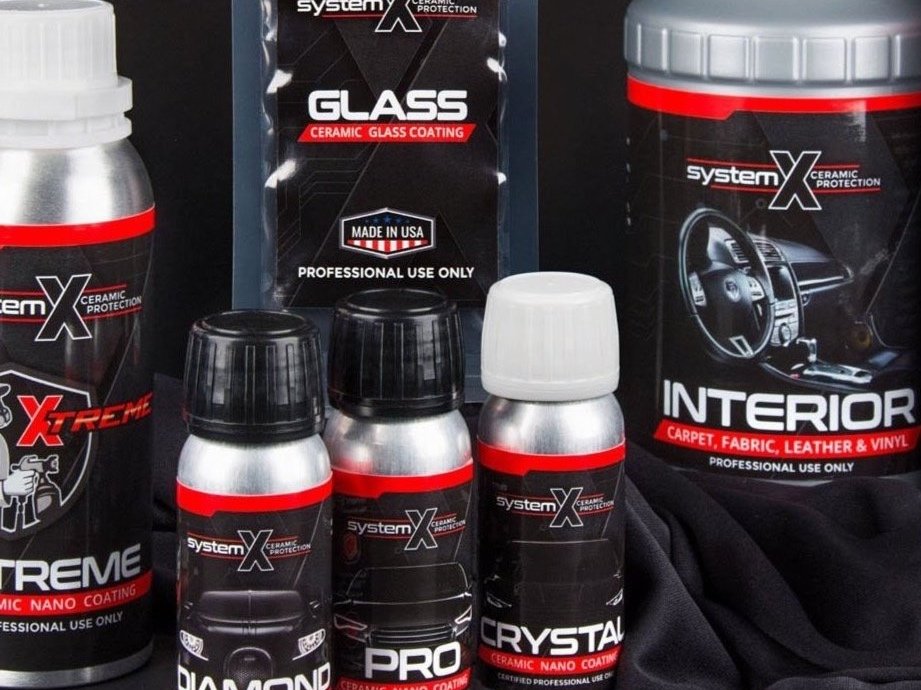Change Your Automobile's Appearance with Ceramic Coating Philadelphia Professionals
Change Your Automobile's Appearance with Ceramic Coating Philadelphia Professionals
Blog Article
Why Ceramic Layer Is the Ultimate Service for a Flawless Complete
Ceramic layer has actually arised as a leading remedy for those seeking a perfect surface for their vehicles, thanks to its impressive resilience and safety functions. What aspects truly established ceramic covering apart?
What Is Ceramic Covering?

When used appropriately, ceramic layer develops a hydrophobic surface area that wards off water and dust, making it easier to preserve and clean up. Unlike traditional waxes or sealants, which generally supply short-lived protection, ceramic finishes can last for a number of years, depending upon the product high quality and application technique. The procedure of applying ceramic layer requires careful prep work, including complete cleaning and often repaint correction, to make sure optimum bonding and efficiency.
Ceramic coatings are not restricted to automotive surfaces; they can additionally be made use of on numerous materials, consisting of glass, steel, and plastics, supplying a functional option for boosting defense. On the whole, ceramic covering stands for a significant improvement in surface defense modern technology, combining both practical and aesthetic advantages for a wide variety of applications.
Benefits of Ceramic Finishing
While several surface security alternatives exist, the advantages of ceramic finish attract attention due to its unique homes and long-lasting efficiency. Among the key benefits is its remarkable resilience. Ceramic Coating Philadelphia. Unlike standard wax or sealants that require constant reapplication, ceramic layers supply a resilient layer that can last for several years, considerably minimizing maintenance efforts
One more remarkable benefit is improved security versus environmental contaminants. Ceramic finishings produce a hydrophobic surface that repels water, dust, and different pollutants, making it simpler to clean up. This function not just maintains the car's look however also decreases the threat of rust and oxidation, particularly in harsh weather condition problems.
Moreover, ceramic finishes offer remarkable resistance to UV rays, stopping fading and degradation of paint over time. This UV security is vital for keeping the visual worth of vehicles and surface areas exposed to route sunshine.
Additionally, the shiny coating attained with ceramic finishing improves the overall aesthetic charm, giving surfaces a showroom-quality shine. Overall, ceramic layers stand for a considerable improvement in surface area security technology, supplying long-lasting advantages that accommodate both practical and visual needs.
How It Works
Comprehending the scientific research behind ceramic coverings reveals exactly how they supply such exceptional protection and durability. At its core, a ceramic finish is a fluid polymer that chemically bonds with the lorry's manufacturing facility paint. This bonding creates a protective layer that is both oleophobic and hydrophobic, repelling water, see here now dust, and oil. The main part of the majority of ceramic finishings is silicon dioxide (SiO2), which is stemmed from quartz. This compound adds to the covering's solidity and resistance to scrapes, UV rays, and environmental impurities.
The application process involves numerous actions, including surface prep work, which is crucial to accomplishing optimum bond. Once used, the coating undertakes a curing procedure, throughout which it solidifies and forms a semi-permanent bond with the paint surface area. This bond is what distinguishes ceramic finishings from standard waxes and sealants, offering a longer-lasting protective obstacle that can sustain for many years.
In addition, the density of the layer can improve its safety high qualities, making certain that it can endure extreme conditions. Ultimately, the science of ceramic layers incorporates sophisticated products with ingenious application techniques to provide an unparalleled level of defense and visual enhancement for vehicles.
Comparison With Conventional Approaches
The benefits of ceramic coatings end up being especially evident when compared to typical paint protection techniques such as sealers and waxes. While waxes provide a temporary luster, normally lasting a couple of weeks to a pair of months, ceramic finishes supply a long-lasting safety layer that can sustain for several years. This longevity significantly lowers the frequency of reapplication, making ceramic coatings a much more economical solution in time.
Furthermore, typical methods typically require considerable prep work and several applications to attain a satisfactory degree of security. On the other hand, ceramic layers bond at a molecular level with the car's surface, creating a robust shield against environmental contaminants like UV rays, acid rainfall, and roadway salts. This bond boosts the automobile's resistance to scratches and swirl marks, which prevail with standard waxes and sealants.
Additionally, the hydrophobic properties of ceramic coverings drive away water and dirt, causing simpler cleaning and maintenance. In comparison, wax and sealant-treated surfaces can bring in grime, demanding even more constant cleaning - Ceramic Coating Philadelphia. In general, ceramic finishes not just provide remarkable defense but also supply a more visually appealing and long-lasting surface, developing them as the favored option for discerning lorry proprietors
Application and Maintenance Tips

Utilizing a foam applicator, use the coating in small sections, following the producer's standards relating to density and overlap. Permit enough treating time in between coats, commonly 24 hours, to make certain correct bonding. After application, it is critical to stay clear of direct exposure to water or severe elements for at the very least a week to allow the covering to completely heal.
For maintenance, clean the car on a regular basis with pH-balanced soaps and prevent unpleasant products. Touchless vehicle cleans are advised to reduce scraping. In addition, making use of a ceramic maintenance spray can boost the layer's hydrophobic residential or commercial properties and durability. Routine examinations for any type of signs of wear will certainly aid preserve the layer's stability and protect that excellent Recommended Site coating.
Verdict
In final thought, ceramic finish emerges as a remarkable choice for accomplishing a flawless automotive surface. By forming pop over to this site a robust bond with manufacturing facility paint, ceramic layer successfully guards against scrapes, UV rays, and environmental impurities.

Report this page